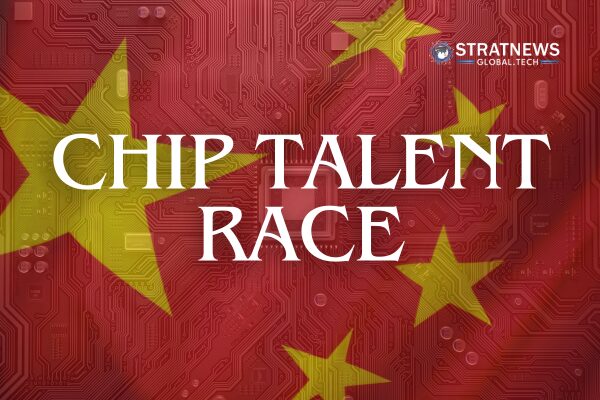Despite increasing efforts to securitise the semiconductor supply chain from China, the sector continues to reflect entanglements involving firms, and the transnational flow of talent and technology. A striking example of the continuing interests of multinational firms in the Chinese market is the recent recruitment initiative by ASML in China. The Dutch equipment maker is conducting an online lithography competition that promises job interviews to top contestants. The behaviour of semiconductor firms in resisting and circumventing export controls showcases the relevance of complex interdependence in shaping international relations in the age of techno-nationalism.
Positioned as a “window” to explore lithography technology, ASML’s competition is a strategic move to secure Chinese talent and retain one of its largest markets amid export restrictions. This coupled with the firm expanding its ‘reuse and repair’ centers in China reflect a broader logic that firms respond to market pressures and talent needs, not just national policies. A logic that states often miss out while enforcing their policies, resulting in unintended consequences.
Complex interdependence suggests that multiple actors interact through various channels in an interconnected world-in this case, commercial as well as academic channels for the non-state actors involved. As governments erect barriers to access technology and market, firms like ASML tap into these alternative channels to maintain continuity in relationships, knowledge flows through human capital, and market access.
Academic Linkages Under Scrutiny
In the intensifying efforts of the US to insulate the semiconductor supply chain from China, another Dutch entity that came under scrutiny was Eindhoven University. Eindhoven University acts as a key talent feeder to ASML and has been questioned on the number of Chinese students studying sensitive technology. It has become increasingly difficult for Dutch companies in the industry to recruit Chinese students. However, the number of Chinese students in the university has only increased in recent years, moving from 77 in 2020-2021 to 136 in 2023-2024, underscoring how educational and research links can thrive even in the face of tightening controls.
The complexity of semiconductor supply chains is not restricted to chips and capital. Capabilities in photolithography technology heavily rely on knowledge and expertise of human capital and a strong supplier network. If China is able to raise the required human capital in photolithography technology, ASML’s concerns of Chinese competition, in an otherwise monopolised market will exacerbate. These concerns stem from Chinese foundries ramping up their capacity in supplying legacy node chips and thereby challenging the position of established players like Powerchip and UMC.
China’s Leap Under Pressure:
Since the imposition of restrictions, China’s legacy node foundries have rapidly expanded their domestic share, challenging foreign players through price competition and massive production scale. Over 50% of the world’s new fabrication plants established between 2023 to 2025 are based in China, and the country is projected to supply 28% of global legacy chip demand by the end of 2025. The establishment of new fabs in China explains the rising demand for ASML’s equipment from the country. China accounted for 36.1% of its net sales in the year 2024. The expansion has created a glut in the legacy node chips market forcing both Chinese and foreign producers to shift their focus on advanced node chips to gain a competitive advantage through technological advancements.
Export controls also led to a $130 billion reduction in ASML’s market capitalization in less than a year. While the sheer volumes offered by the Chinese market depict its significance for the firms, its ability to rapidly innovate in the face of sanctions underscores the long term strategic risk of isolating China. Stronger restrictions will only push the country to direct all its resources to build in-house solutions.
Market pressures, export controls, and state support drive Chinese chip equipment makers like SiCarrier and Shanghai Micro Electronics Equipment Group (SMEE) to rapidly innovate towards building a homegrown DUV lithography machine for producing advanced node chips. While the Chinese Ministry of Industry and Information Technology’s claims regarding DUV Lithography tools are likely exaggerated, other semiconductor manufacturing equipment firms are accelerating their research efforts. SiCarrier, a firm closely linked to Huawei specialises in wafer processing tools and has filed a patent for a DUV Lithography tool. SMEE, with its current most advanced tool being able to produce a chip on 90nm process technology, has also filed a patent for EUV lithography tool. Researchers at the Chinese Academy of Sciences (CAS) have developed a solid-state laser that produces 193nm deep ultraviolet (DUV) light used for semiconductor photolithography. If the innovation is successfully scaled, it can be used to produce chips below the 28nm node. Although in the early stages of its development, these efforts signal the competition that could arise out of China for dominant players like ASML.
Crucially, none of this progress can occur without talent. Firms need skilled engineers, and even ASML may be using its competition not only to recruit, but to map the landscape of China’s lithography expertise. The actions of firms navigating constraints imposed by states and responding to market demands reflect overlapping interests. Amidst the divergence of political and commercial logic, firms have also openly criticised the US policy of export controls as a ‘failure’. As US semiconductor policies try to reshape the global semiconductor supply chain, it opens up an opportunity for China to ‘overtake on the curve’.


